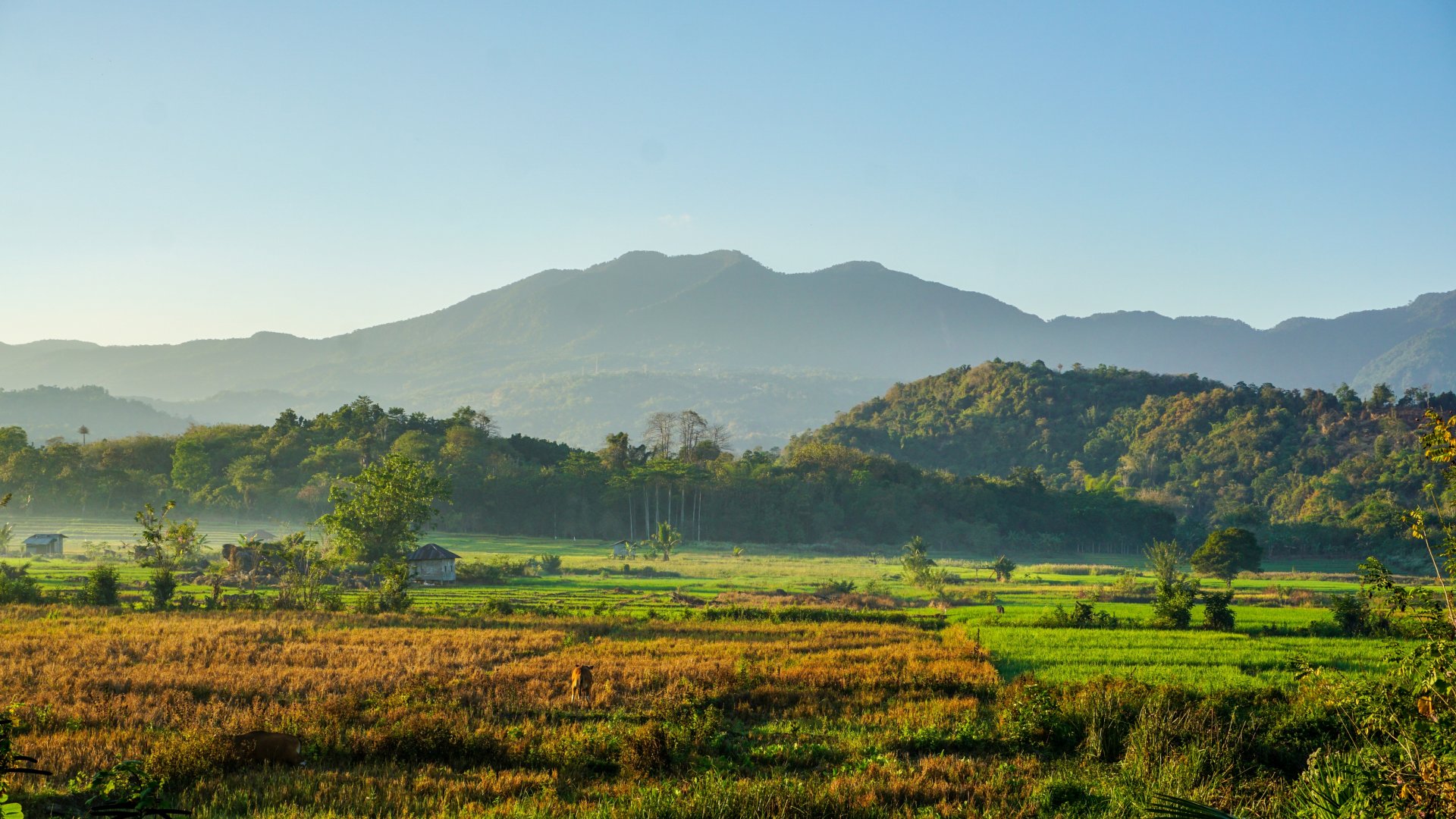
Solving tough challenges with smart initiatives in tropical forests of Mbeliling, Gorontalo and Harapan

Three projects in different parts of Indonesia, highlighting disparate challenges and solutions for the country’s forests

Protecting a total of 344,000 hectares of key forest across three sites, thanks mostly to community-led restoration work

Providing direct benefits for tens of thousands of people in local forest communities through sustainable livelihood schemes
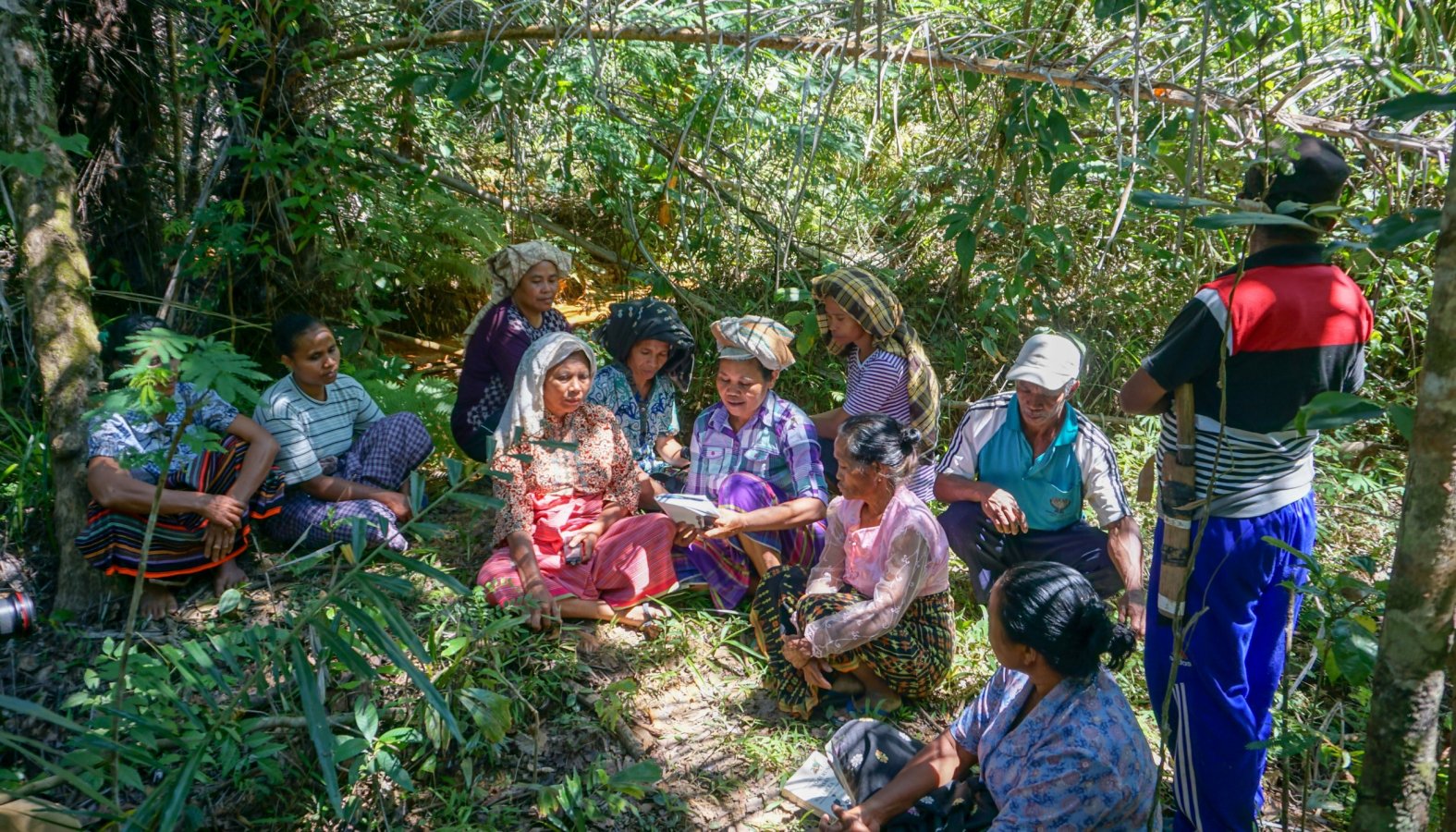
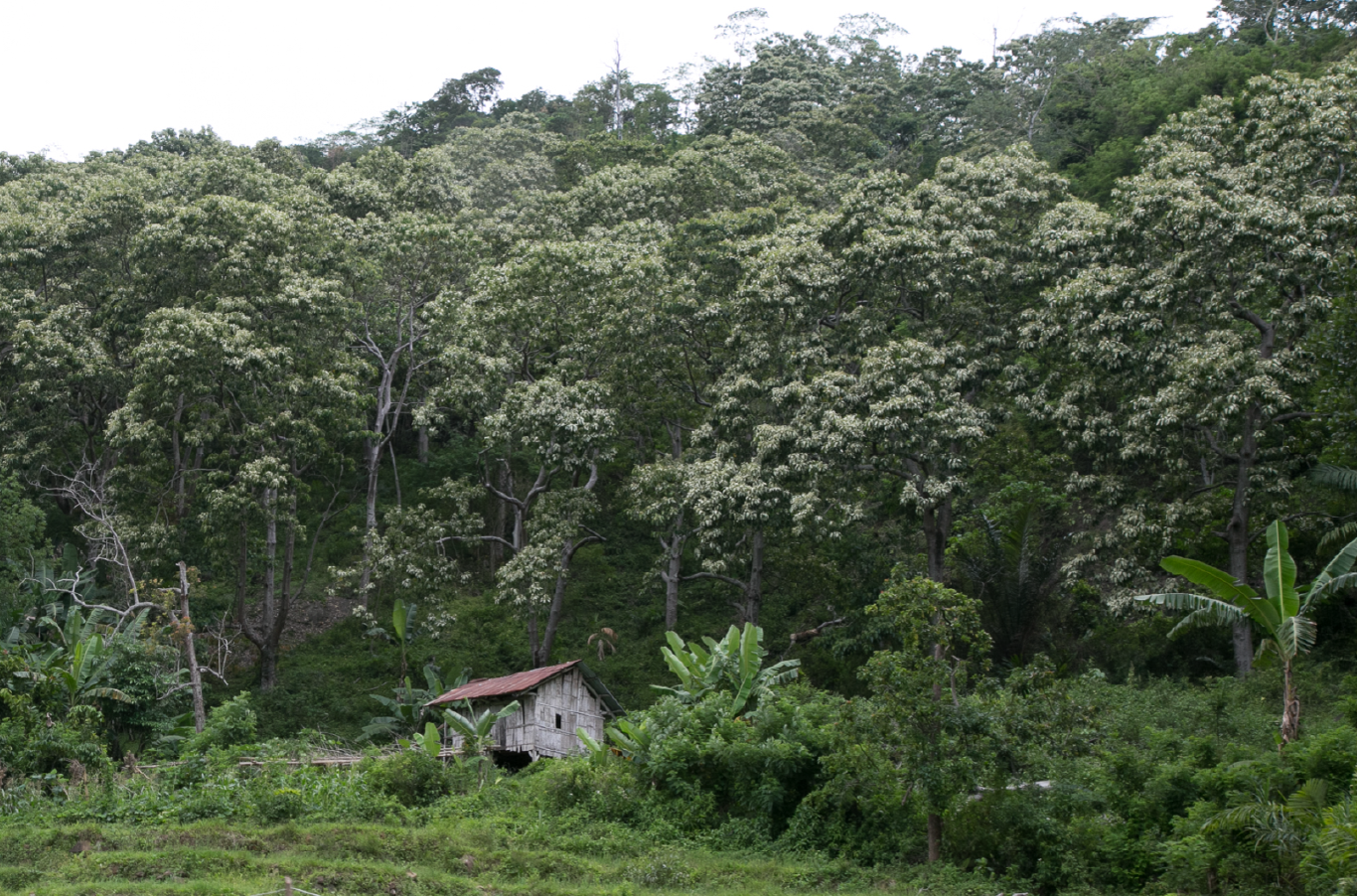
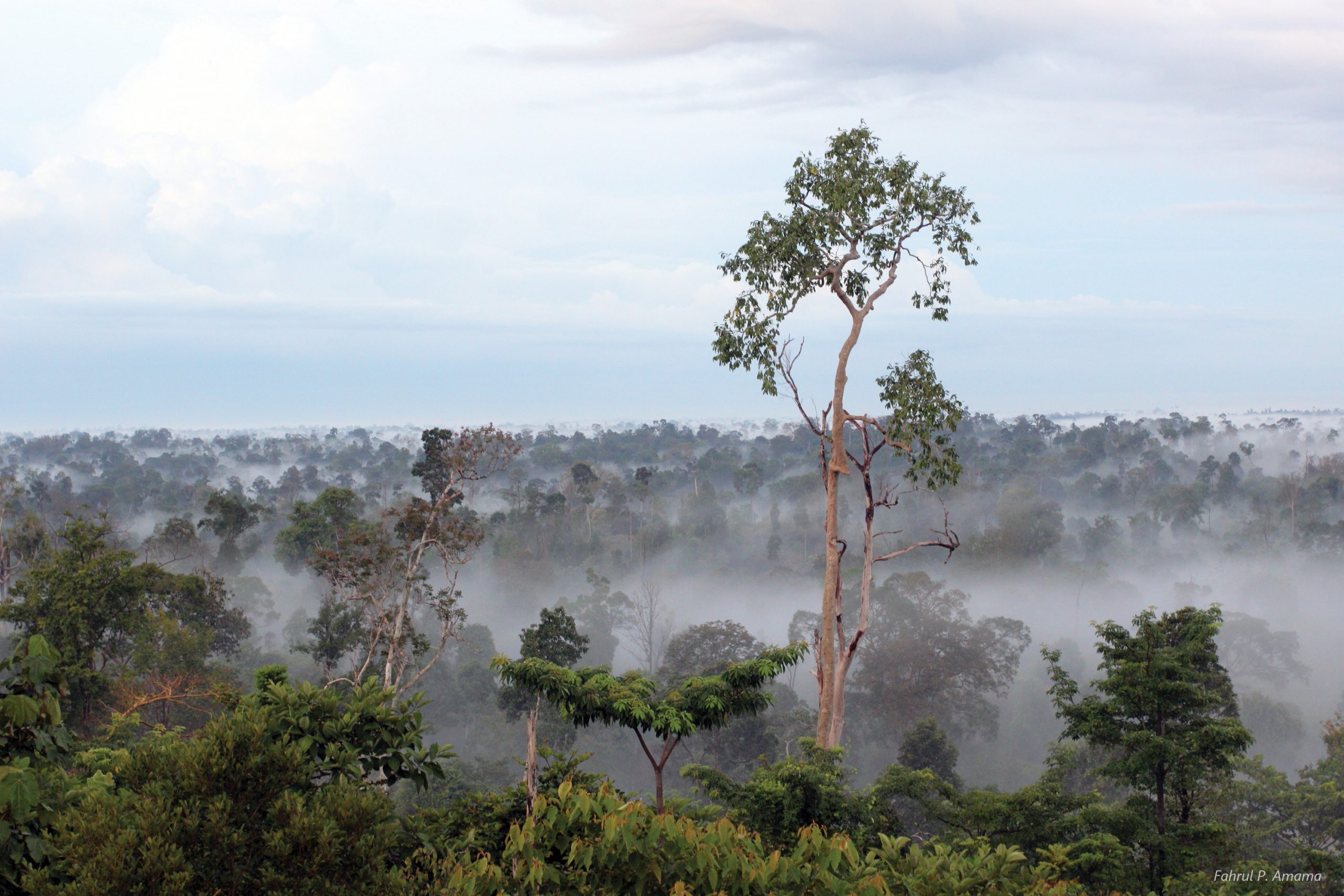
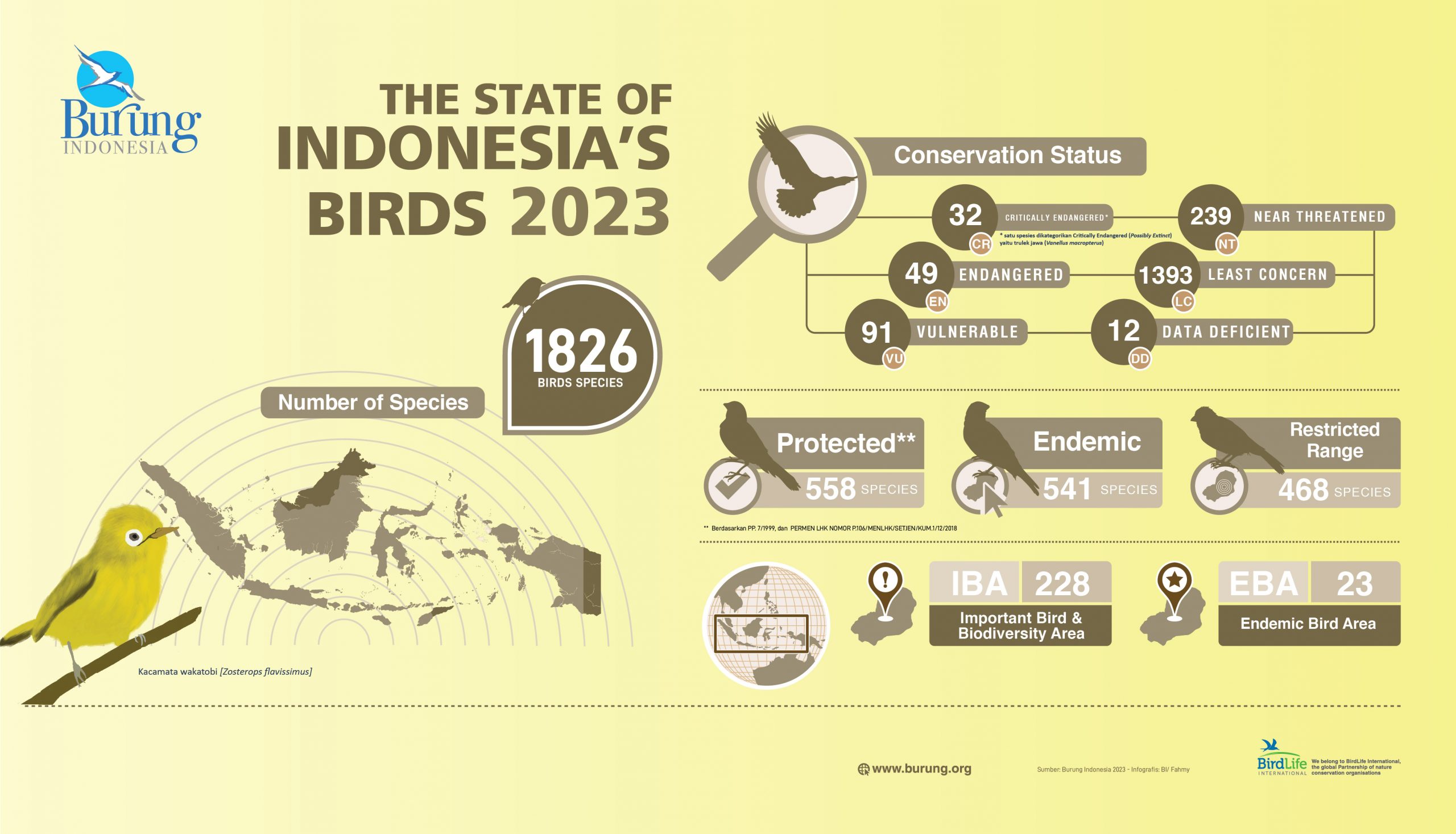


Trillion Trees partner BirdLife International has been operating in Indonesia through local conservation group Burung Indonesia since 2004. Here are some achievements in each of these three particular forests.
Mbeliling
Increased forest cover by 10,000 hectares, and established conservation governance scheme.
Burung Indonesia has been active in the Mbeliling landscape on Flores island since 2007. Successes include increased forest cover in an area of roughly 10,000 hectares, where natural succession has managed to take place, thanks to local conservation agreements and collaboration with forest management units. And helping to establish a conservation governance scheme that contributes to the local economy.
To give one example of success here – a local Mbeliling farmer who has worked with Burung Indonesia as a community conservation leader for over a decade. Having successfully restored his own 5 hectares of grassland and savanna back into forest, Sadip’s income-generating sustainable forestry methods have inspired many on the island and beyond. Media publicity also influenced local government. The achievements have been studied as far afield as the University of Copenhagen in Denmark.
Gorontalo
Promoted sustainable landscape model since 2009, and helped local farmers with organic, sustainable agroforestry.
Burung Indonesia, working together with the Gorontalo local government and other local partners on the island of Sulawesi, has been pushing for a sustainable landscape management model for more than a decade.
One example of success here has been in organic agriculture, which has helped increase food security for local people while providing financial benefits. Research has shown that non-organic fertilisers were decreasing soil and water quality, adversely affecting biodiversity and ecosystem services. So Burung Indonesia and local partners helped develop organic fertilisers using ingredients easily accessible to local households – including banana stems, gamal plant, cassava, sugar, corn, straw and manure. This has, for example, increased productivity of rice fields and vegetables, while repelling pests with an eco-friendly mix of garlic, turmeric, lemongrass and pepper mixed with soap. One agroforestry farmer in Gorontalo found his cacao harvest more than doubled.
Harapan
Licensed first ecosystem restoration production forest in Indonesia and advocating non-timber and environmental services as forest business.
Harapan, on the island of Sumatra, was the first forest area in Indonesia to be part of a licensed Ecosystem Restoration Concession (ERC). Previously a forest licence simply allowed a company to extract timber, but this licence required holders to protect and restore the forest ecosystem. It has been a case study for ERC forest management, inspiring more ecosystem restoration areas to save remaining forests. In 2010, the total area licensed as an Ecosystem Restoration Concession in central Sumatra was increased to 98,000 hectares.
In 2010 the total area licensed as an Ecosystem Restoration Concession in central Sumatra was increased to 98,000 hectares. In 2020, the government issued in total 16 Ecosystem restoration licences, covering 621,736 hectares.
In 202,1 the government merged the existing forest licences into a single licence called business permit for forest utilization. The most significant implication resulting from this is that license holders are allowed to have different types of activities under a single license. This change also signifies the shift of government point of view regarding forest utilization, from timber extraction to non-timber forest business. Forest business license holders are encouraged to deliver new types of activities, such as utilization of non-timber forest product, carbon and other ecosystem services, as well as restoration. In a way, restoration has now mainstreamed into forest licensing policy.
Mbeliling
Improving income in 36 villages through community-led businesses, providing direct benefits for 40,577 people, establishing green economy investment mechanisms, and protecting 35,000 hectares of Mbeliling’s forest.
In 2007 local BirdLife partner Burung Indonesia developed the idea of Village Resource Management Agreements (VRMAs), to halt damage to biodiversity and forests on the island of Flores. Working with communities on forest protection, fire prevention, water source management and regular monitoring. They also help communities explore economic activities that improve local earnings without damaging natural habitats. In 2010, there were only 10 small businesses in the area, now there are more than 100 across 36 villages. These include cocoa growing, livestock and fish husbandry, tree nurseries, coffee processing, a candlenut co-op, a bakery and shops. Local microfinance units give business owners a boost to get started.
If communities can earn enough from sustainable agroforestry, they are less likely to resort to hunting or logging to feed their families. Growing a variety of crops between the trees also keeps the soil healthy and provides habitat for wildlife. Additional investment will enable hundreds more community-led, forest-friendly businesses to thrive.
Gorontalo
Protecting 40,000 hectares, improving Gorontalo’s natural forest connectivity, strengthening livelihoods of forest communities, directly benefiting 2,300 people.
Burung Indonesia has been working in the Gorontalo area of Sulawesi for over 10 years, together with local government and community groups. Developing a sustainable landscape management model – to conserve biodiversity, and improve the livelihoods of forest communities, by strengthening natural forest connectivity. This will also increase ecosystem resilience against climate change.
The project in Gorontalo involves connecting various existing conservation areas and protected forests. Due to the hilly topography and difficult accessibility, a large part of the forest was still in relatively good condition, but some sections had been allocated for oil palm plantations. Working with forest management units, nature conservation agencies and the communities living around the forest, the collaboration has managed to protect and intensively monitor a 40,000 hectare, high-biodiversity production forest that serves as the corridor between eight protection forests and two conservation forests. The combined natural forest landscape integrated by the corridor are 350,000 hectares, making up half of the province’s forest cover.
Harapan
Protecting 98,000 hectares of key lowland forest, achieving long-term forest-friendly economic sustainability, benefitting 8,000 people directly, and establishing Harapan as a forest-restoration knowledge centre.
The management of ‘Hutan Harapan’ (meaning ‘Forest of Hope’) combines restoration of local flora and fauna with consideration of aspects such as soil, climate and topography, to achieve the right balance in an ecosystem.
It includes improvement of wildlife habitat quality, diversity of animal populations, and recovery of hydrological function and control of soil erosion. It also provides economic benefits to communities around the forest, as well as engaging them in conservation activities. The economic potential of forests can involve ecotourism, research, education and training, and poverty alleviation.
The process of forest restoration itself ranges from procurement of good quality seeds, nurturing in nurseries, to planting in priority areas, then ongoing maintenance and protection of seedlings and trees – weeding, monitoring for disease, and guarding against fires and damage. Protection against encroachment and deforestation can include setting up local security units and routine patrols, and wildlife inventories, with training and awareness-raising in the community.
In some cases local people formerly involved in activities such as poaching, hunting or logging are redirected towards ecosystem restoration. It is essential there are increased economic opportunities for local communities. Hutan Harapan has also been established as a forest restoration knowledge centre, offering local, national and international education, research and management training.
Indonesia is home to some of the most extensive and biologically diverse tropical forests in the world – but also some of the most damaged. These three projects are examples of what can be done to save and restore Indonesia’s forests.
Mbeliling
The Mbeliling landscape on Indonesia’s Flores island is an expanse of 94,000 hectares, approximately 73% of which is forest. A mix of locally-managed protection areas and production forest. The wealth of wildlife here includes 171 bird species, dozens of them endemic to the island, some threatened with extinction – such as the Flores hawk-eagle and scops owl. It is also one of only a few places in the world where you could see a wild Komodo dragon – the world’s largest and most iconic lizard.
The Mbeliling forests are also a vital water source, both for agricultural activities and providing clean water for local villages and towns. This is a rich agricultural landscape that supports the livelihoods of around 40,577 people across 36 villages. Commodities produced include rice, coffee, cocoa, cloves, cashew nut and candlenut – a large, white nut valued for its oil, which can be burned for light or used in cooking.
Gorontalo
The province of Gorontalo, in the north of Indonesia’s Sulawesi island, is still almost 60% covered with rich, biodiverse forests. Gorontalo is listed among the world’s 34 ‘biodiversity hotspots’. The area is home to dozens of endemic birds, including rare hornbills, and many other unique animals – such as the critically endangered crested macaque (famously tufty-haired ape), the spectral tarsier (big-eyed tiny primate), dwarf buffalo, and babirusa (‘deer-pig’).
Deforestation rates here have been high in the past decades, mainly caused by logging, palm oil plantations and mining. And the forests have been further fragmented by road construction.
Harapan
Hutan Harapan is one of the last remaining areas of dry lowland forest on the Indonesian island of Sumatra. It rivals the Amazon in terms of species richness. It is also among the most threatened rainforests in the world. It contains a mixture of intact primary forest and secondary forest that has been altered by logging or other activities. Harapan forest is home to a host of rare animal and plant species – among them 728 different types of tree. And more than 300 bird species, including the world’s rarest stork (Storm’s stork). Endangered mammals here include the Sumatran tiger (fewer than 300 remain in the wild), Asian elephants, sun bears, tapirs, and the agile/black-handed gibbon.
Harapan is an important water catchment area and source of irrigation for the people of Jambi and South Sumatra – including indigenous peoples such as the Batin Sembilan community. They also use the Harapan forest by taking non-timber forest products, such as jernang (dragon’s blood resin), honey, latex rubber and medicinal plants.
Threats to the Harapan forest have historically come from clearing land for rubber plantations or oil palm. Slash-and-burn agriculture has often triggered forest fires. Land is also illegally ‘grabbed’ in order to sell it at a profit to forestry or plantation companies. Illegal encroachment and logging is still at an alarming rate, and threatens the sustainability of the forest. Action is urgently needed to save beautiful Hutan Harapan – a precious remnant of the rainforests that once covered Sumatra.
Lead Partner: Burung Indonesia
BirdLife International